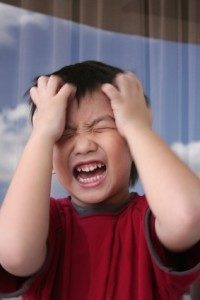
Predominantly Inattentive.
For those with this version of ADHD, the world is hard to pay attention to. There is too much going on in their heads. They forget assignments, make careless mistakes, and can’t seem to listen to directions.
Of the three types of ADHD, this one is most likely to be missed for a while, because the symptoms seem to be a result of apathy rather than a cognitive dysfunction. Being distracted and forgetful is common to all people, but in those who have inattentive ADHD it is a chronic problem. Even if they really want to pay attention, they quite simply are unable to.
Predominantly Hyperactive-Impulsive.
When discussing ADHD, hyperactivity is what most people think of; the child who can’t sit still, is constantly moving or on the go, and just can’t keep from interrupting a conversation and behaves inappropriately and does not understand boundaries. Because of the elevated level of activity, this type of ADHD is usually spotted very early. A parent may complain of a toddler who never sleeps and is always getting into things to the point of parental exhaustion.
Combined Type of ADHD – Hyperactive-Impulsive and Inattentive.
When most of the symptoms are present from both expressions of ADHD, then the diagnosis of combined hyperactive-impulsive/inattentive ADHD is made. This is a challenging situation for any individual and parent.
Forgetfulness combined with constant movement, difficulty following directions, and an inability to remember what was said and both parents and children are immensely frustrated by this pattern.
Self-Esteem Issues are Common.
Aside from the challenges that are faced by people with different types of ADHD, they also suffer from self-esteem issues. They often hear that they are lazy, impossible , disorganized and stubborn. The earlier a diagnosis is made the more help can be provided, reducing issues of self-esteem later in life.
It is critical to realize that even with ADHD, these same people are blessed with many gifts. Creativity, flexibility, an ability to see beyond the obvious, and a facility with carrying on several projects at once are among these. Once socially challenging behaviors have been curbed, children with ADHD are especially engaging and imaginative and can become wonderful members of our community.
How Different Forms of ADHD Affect Adults.
The same behaviors that affect children in one way appear differently in adults. The child who couldn’t sit still turns into an adult who is restless, unable to hold a job long term and is challenged in interpersonal relationships. Adults with ADHD may be short tempered, have difficulty staying motivated, and deal with feelings of inadequacy and under achievement. Frequently and sadly these people can turn to drugs and alcohol to numb their pain.
 The Treatment of ADHD Varies Too.
The Treatment of ADHD Varies Too.
The different expressions of ADHD that present determine, to some degree, the treatment. Focusing on attention span makes little sense for someone who deals primarily with hyperactivity issues.
Homeopathic remedies, dietary changes, behavioral plans, and brain training can all play a part in treatment. Medications are also available to address specific symptoms, but should be used with great care. Fortunately, there are some great online resources available to you if you’re unsure of which treatments to use or need more information on the types of ADHD diagnosis your child may fall under.
Other help tips on dealing with ADHD
More on types of ADHD on our ADHD info page




